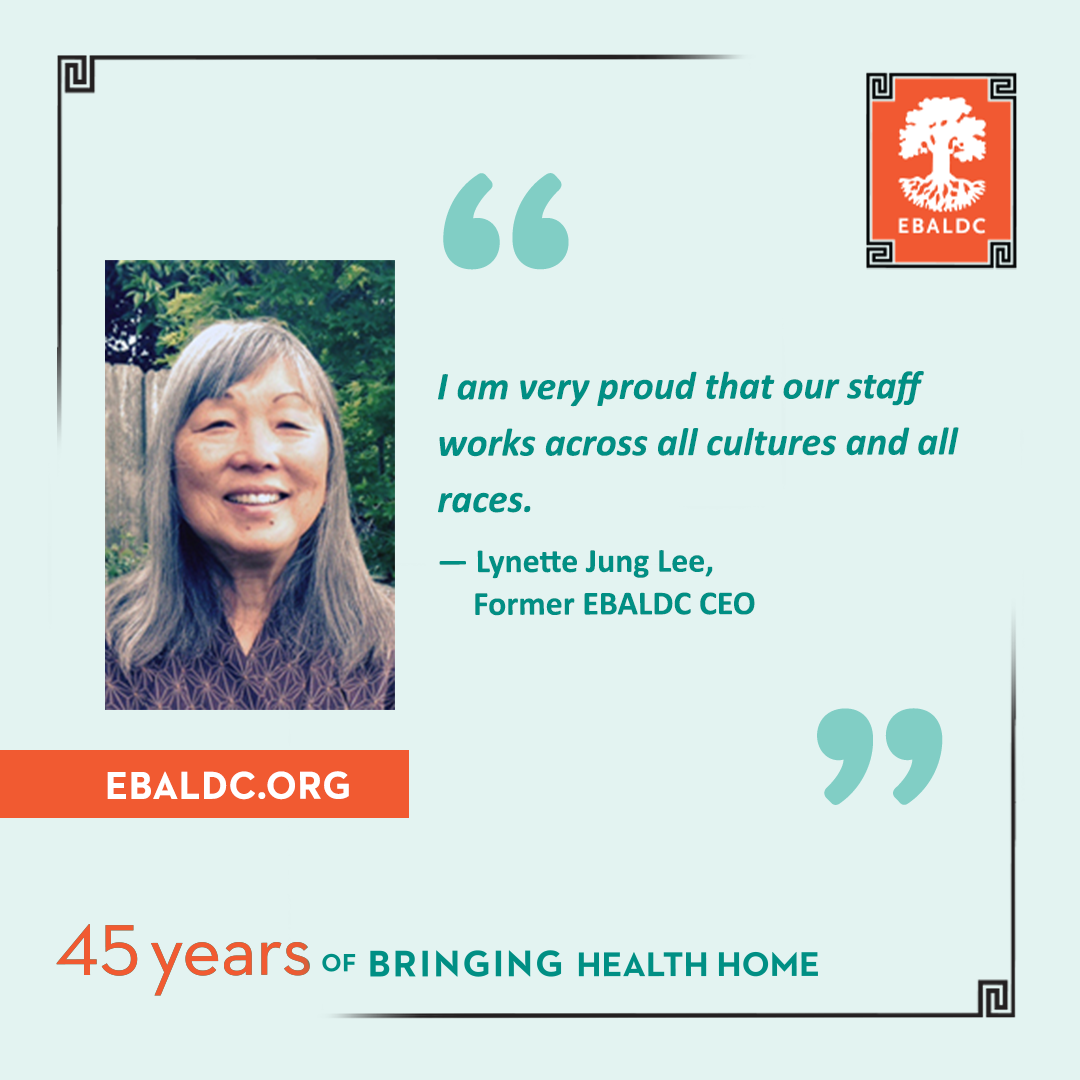Serving the Diversity of Our Oakland Neighborhoods

45 Stories for 45 Years
Contributor: Lynette Jung Lee, former executive director of EBALDC
EBALDC’s earliest projects, the Asian Resource Center, and Frank G. Mar Community Housing, were focused on serving the Asian and Chinatown community. However, we noticed that recently arriving Asian immigrants, especially those from Vietnam, Laos, and Cambodia, were moving into West Oakland and the part of East Oakland known today as the San Antonio Neighborhood.
Part of this was due to little to no housing availability in Chinatown; 25% of Chinatown housing was removed due to redevelopment efforts, such as the building of the 880 freeway, which cut through Chinatown, and conversion to commercial use during the mid 1900s. Also, rent was cheaper in East and West Oakland, and there were more potential project sites for affordable housing.
At EBALDC, we didn’t want to be seen as invaders coming into surrounding neighborhoods so we worked to develop partnerships with local groups. In West Oakland, our development partner became Jubilee West, which was working to revitalize homes for residents as well as provide supportive services. They had not done a new development before so in addition to sharing development fees, they also learned about starting a development from the ground up. We, in turn, were able to work with the community to make sure that any development served their needs and addressed their priorities. Together we developed Marcus Garvey Commons, 22 units of apartments and townhomes.
In East Oakland, we partnered with the San Antonio Community Development Center (SACDC), which had renovated an old firehouse and brought Headstart and financial literacy programs into the neighborhood. SACDC wanted to have commercial stores that would provide jobs on the ground floor of a new development project, as well as give input on the affordable housing. As a partner, SACDC shared in the development fees, did community outreach for the project, and gave the name of Hismen Hin-Nu to the 92 affordable apartments, townhomes and commercial storefronts, in recognition of the Muwekma peoples who originally lived in that part of East Oakland.
We wanted to make sure that these new developments were open to and served everyone. We worked with local neighborhood institutions and ethnic newspapers to conduct affirmative marketing. Over time, the residents in all our developments came to reflect the populations in those neighborhoods, always with a diverse mix of ethnicities. As EBALDC began serving more diverse groups and cultures in our developments, our staff also began to reflect that diversity. I am very proud that our staff works across all cultures and all races and that our departments have learned to communicate and work together.
As EBALDC marks our 45th anniversary, we will be gathering more stories like this one from our friends, family, community members, partners and more stakeholders that have made our impact possible. We would be honored for you to join us:
- To contribute your own story, visit: bit.ly/EBALDC45Stories
- Follow us on social media: @EBALDC
- Visit us online to read the stories: ebaldc.org/category/45-stories
